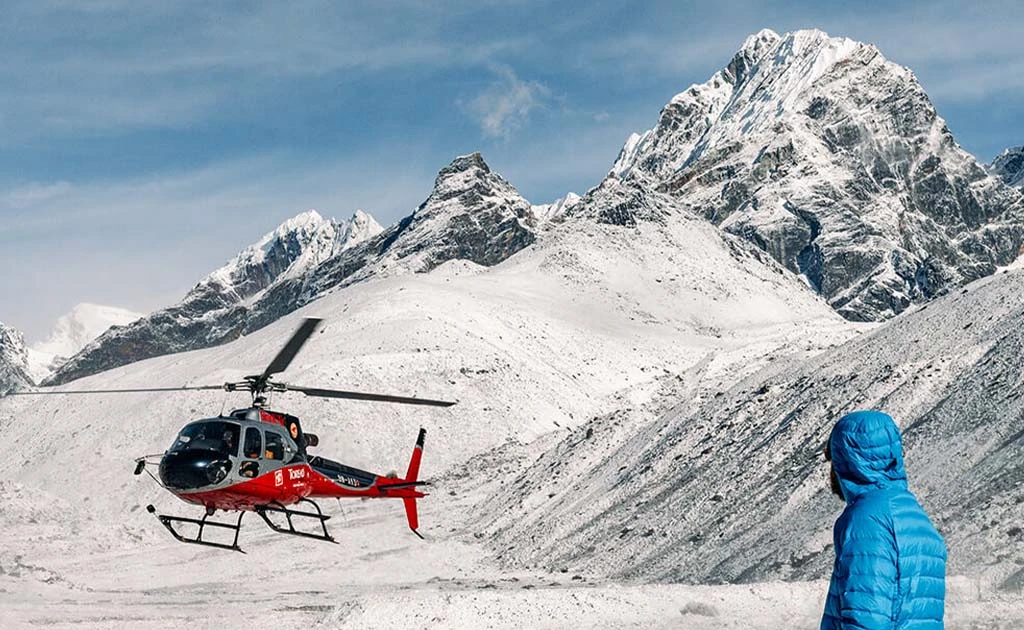Experience the ultimate Everest Base Camp Trek with Helicopter Return, a perfect blend of adventure, comfort, and safety in the heart of the Himalayas. This trek is ideal for those who want to explore the Everest region without worrying about the long, strenuous descent—especially if you face altitude challenges, health concerns, or limited time. With the helicopter return, you can enjoy the journey without compromise, making it one of the most convenient and unforgettable Himalayan treks. Your adventure begins with a thrilling scenic flight from Kathmandu to Lukla, the gateway to the Everest region. From Lukla, the trek winds through traditional Sherpa villages such as Namche Bazaar, Tengboche, Dingboche, and Lobuche, offering a rare glimpse into the warm hospitality, culture, and way of life of high-altitude mountain communities. Along the way, you’ll enter the magnificent Sagarmatha National Park, a UNESCO World Heritage Site, surrounded by towering peaks, glaciers, and suspension bridges that make every step an adventure. Reaching Everest Base Camp, you’ll experience the ultimate sense of achievement standing at the foot of the world’s highest peak. For the best view of Mount Everest, an optional trek to Kala Patthar rewards you with a panoramic 360° vista of Everest, Lhotse, Nuptse, Pumori, Ama Dablam, and the Khumbu Glacier—an iconic Himalayan sunrise experience you’ll never forget. After soaking in the spectacular views, you’ll return to Gorakshep and board a helicopter flight back to Lukla, enjoying breathtaking aerial views of the Everest region, deep valleys, snow-capped peaks, and remote villages. From Lukla, a short flight brings you back to Kathmandu, making this a luxury, time-saving, and hassle-free Everest trek.
This Everest Base Camp Trek with Helicopter Return also allows you to immerse yourself in Sherpa culture, witness Buddhist monasteries, and explore the spiritual and natural beauty of the Himalayas. Every step of the journey highlights the resilience, warmth, and tradition of the Everest region communities. At Iconic Holiday Nepal, we specialize in creating unforgettable Everest experiences. Our expert guides, carefully planned itineraries, and focus on safety ensure that your trek is not only adventurous but also comfortable and memorable.
Lukla Flight Information
During the peak trekking seasons (March, April, May, September, October, and November), flights to Lukla operate from Manthali (Ramechhap) Airport, which is a scenic 5–6 hour drive from Kathmandu. Travelers typically start early in the morning between 1:00 and 3:00 AM to catch the approximately 20-minute flight.
In contrast, during the off-peak months (January, February, June, July, August, and December), flights to Lukla depart directly from Kathmandu, allowing for a more relaxed morning start between 5:00 and 6:00 AM, with a slightly longer 35-minute scenic flight to the Everest region.

